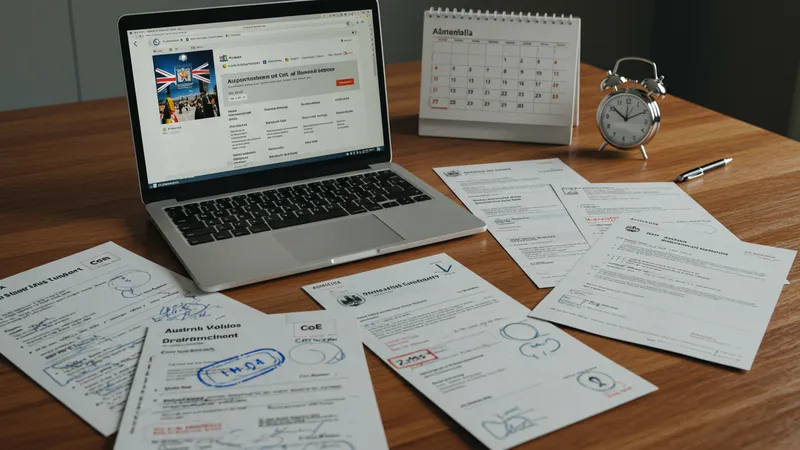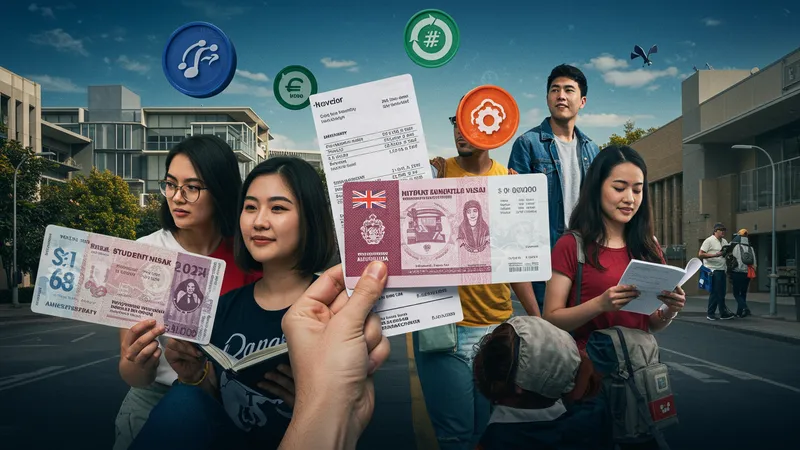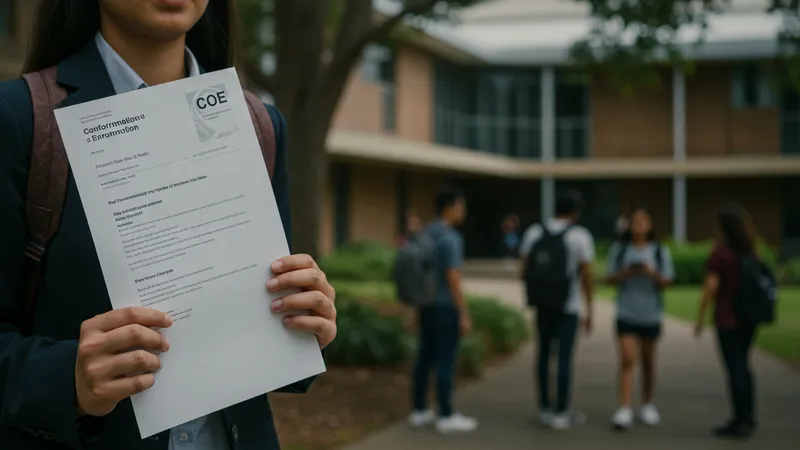

Pursuing higher education abroad unlocks a world of academic and cultural experiences, but for international students, navigating the pathway to study in Australia means understanding a set of rigorous processes. Student visas are much more than routine documents—they serve as official permissions that allow learners from outside Australia to enrol in institutions, stay during their education, and sometimes even work part-time. Each requirement, from documentation to financial proof, is designed to ensure genuine intentions and the ability to thrive in Australia’s demanding education environment.
Grasping student visa policies and requirements reveals a complex picture. Those aiming to study in Australia must not only choose the right visa subclass but also meet precise health, character, and financial criteria. This process can differ depending on the level of study and the institution, making it crucial for prospective students to examine all details before submitting their application. Knowledge of these requirements can determine success or disappointment during the journey.

Students should pay close attention to the required English language proficiency tests. For most Australian institutions, the IELTS or TOEFL results are a compulsory element of the visa application. Each university and course may demand specific band scores, making early preparation essential. IELTS and TOEFL differ in format and pricing, so a strategic selection can smooth the application process.
The Subclass 500 Student Visa stands as the central pathway for most international students seeking education in Australia. It allows for full-time study, with additional permissions such as part-time work during breaks. However, every applicant must demonstrate that they have obtained enrolment confirmation, sufficient funds, and suitable health arrangements. Missing one key document can delay or jeopardize the entire process.
Australia’s student visa requirements reflect the country’s commitment to maintaining high educational standards and safeguarding visa integrity. For instance, applicants may need to show proof of accommodation, insurance, and personal background clearances. Rules can also update frequently in line with government policy changes—students need to check the official Department of Home Affairs website for any adjustments.
Genuine Temporary Entrant (GTE) requirement forms a significant part of the assessment, where students must prove they intend to stay in Australia temporarily for study. This element focuses on personal circumstances, potential immigration history, and the purpose behind their chosen course. A well-written GTE statement, supported by accurate documents, increases the likelihood of visa approval and maintains student compliance with regulations.
Successfully navigating Australia’s student visa system opens countless educational and cultural avenues, but each requirement has its own nuance. As we dive deeper into the specifics—such as financial requirements, work provisions, and institution types—students unlock even more avenues to strengthen their applications and academic journeys. The deeper details reveal even more valuable insights ahead…
One of the most significant stages in applying for a student visa for Australia is document verification. Every supporting document, from academic transcripts to Confirmation of Enrolment (CoE), must meet strict authenticity checks. The Australian government collaborates with institutions to ensure only genuine students progress, requiring translations for non-English documents and sometimes attested copies from authorized bodies. Incomplete or unclear documentation can lead to additional delays, requests for information, or even outright rejection, underlining the value of detailed preparation.

The visa application process itself is streamlined through online portals but requires careful attention at every step. Applicants set up an ImmiAccount on the Australian Department of Home Affairs website to lodge applications, upload all documents, and track status updates. The digital process speeds up evaluation but increases the importance of error-free submissions. Any mismatched details or missing files can trigger follow-ups or necessitate interviews, extending wait times and adding pressure for international students on tight schedules.
Financial proof requirements remain a cornerstone of the Australian system. International students must demonstrate access to adequate funds to cover tuition, living expenses, and travel costs. As of 2024, the minimum requirement is around AUD 24,505 annually for living expenses, with further proof for dependents if applicable. Evidence can include bank statements, scholarship offers, or sponsorship letters—clarity, recency, and sufficient balances are critical for a successful review by visa officers.
To further prevent misuse, Australia also mandates character and health requirements. Students submit police clearances and undergo Overseas Student Health Cover (OSHC) checks. This health insurance, purchased from approved providers before arrival, ensures that unforeseen medical costs are covered throughout the visa period. Collectively, these requirements reinforce the integrity of the system, protecting both international learners and the broader community well beyond the classroom.
English proficiency stands at the centre of Australian student visa requirements, reflecting the need for seamless academic integration. IELTS and TOEFL remain the two dominant tests accepted by most schools and the Australian government. IELTS—widely recognized globally—offers an intensive assessment of reading, writing, speaking, and listening skills, with most universities requiring a minimum score of 6.0 overall. The results, typically valid for two years, not only affect the visa process but also course placements and graduate program eligibility.

When comparing IELTS and TOEFL, differences in format and delivery become evident. IELTS often favours face-to-face speaking tests and written exams, while TOEFL is largely internet-based with integrated digital modules. IELTS is priced slightly higher in Australia, around AUD 410, compared to TOEFL at approximately AUD 300. Student preferences tend to follow familiarity—those comfortable with computer-based exams might choose TOEFL, whereas others appreciate the human interaction in IELTS speaking sections.
Some universities and courses stipulate higher scores for certain faculties, such as law or medicine, to ensure entrants can succeed in demanding classroom and clinical environments. Applicants must check both institution and course-specific English requirements well before applying for their visas. Submitting outdated or insufficient test results is a common pitfall that can set back the entire application process.
Apart from IELTS and TOEFL, other tests such as the Pearson Test of English (PTE) and Cambridge English exams are accepted at some Australian institutions. However, for visa purposes, IELTS and TOEFL remain the benchmark options, simplifying decision-making for most students. An early start with test preparation and mindful selection lead to smoother application experiences and stronger confidence at every stage.
Financial security is a recurring theme throughout the Australian student visa process. Beyond the initial proof of funds, students must maintain sufficient resources for the duration of their studies. Australia’s government reviews current living costs, tuition, and accommodation expenses annually, adjusting financial threshold requirements accordingly. Students must be ready to present updated bank statements or sponsors’ evidence even after arrival, especially during subsequent visa renewals or compliance checks.

Australian student visas offer built-in work rights, contributing to the country’s appeal for international students. As of 2024, holders of the Subclass 500 Student Visa may work up to 48 hours per fortnight during official study periods and unlimited hours during scheduled breaks. This provision supports students with invaluable work experience and partial financial relief, yet strict adherence to these limits is crucial—violations can result in visa cancellation or restrictions on future applications.
Many students seek part-time roles in hospitality, retail, or campus services. Australia’s urban hubs, such as Sydney and Melbourne, present numerous such options, but competition can be high. Institutions offer career counselling, resume workshops, and job boards specifically for international students. Being proactive and balancing work with studies is a skill that often distinguishes successful visa holders in the Australian system.
Managing finances and work obligations requires strong planning and time management. Students are encouraged to budget carefully, factoring in health insurance, daily expenses, and emergency funds. Developing practical financial habits early on not only supports compliance with visa requirements but also lays the groundwork for effective personal management—an essential for both academic and future professional success in Australia.
Enrolment in a registered Australian course is non-negotiable for retaining a valid student visa. The Confirmation of Enrolment (CoE) verifies a student’s status, study load, and program dates—students must inform their institutions if they change programs, withdraw, or defer. The Australian government monitors attendance, academic progression, and course transfers closely, using this information to enforce visa rules and uphold the credibility of its education system worldwide.

Ongoing compliance extends beyond the classroom. International students must maintain up-to-date records with the Department of Home Affairs, respect visa conditions, and avoid prohibited activities. Australian institutions provide dedicated support teams to help students understand these responsibilities, from reporting requirements to academic counselling. Ignoring compliance can jeopardise both student standing and future visa options, making vigilance a top priority throughout one’s studies.
Upon graduation, pathways open for those wishing to extend their stay. The Temporary Graduate Visa (Subclass 485) is a prime example, allowing successful graduates to gain work experience in Australia for up to four years, depending on qualification level. Applications for post-study visas often demand fresh proof of English, health insurance renewal, and proof of completed qualifications—planning ahead can make transitions far smoother for ambitious students.
Throughout these stages, expert guidance makes a difference. Many Australian universities host workshops, webinars, and dedicated advisers who steer students through both study and work rights. Active engagement with these resources is the key to harnessing every advantage a student visa offers, from academic excellence to future career prospects within Australia and beyond.